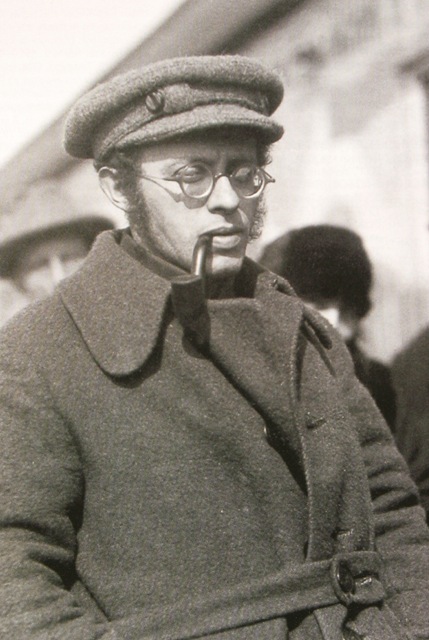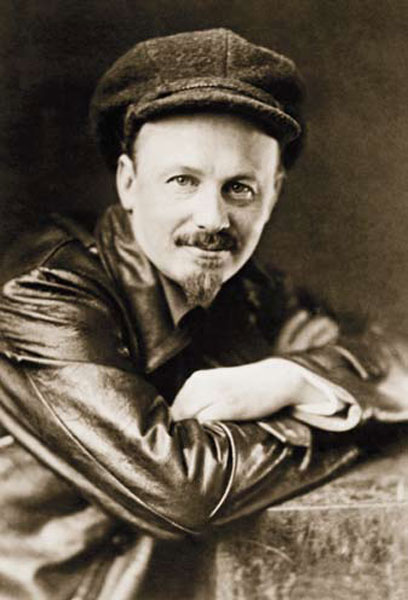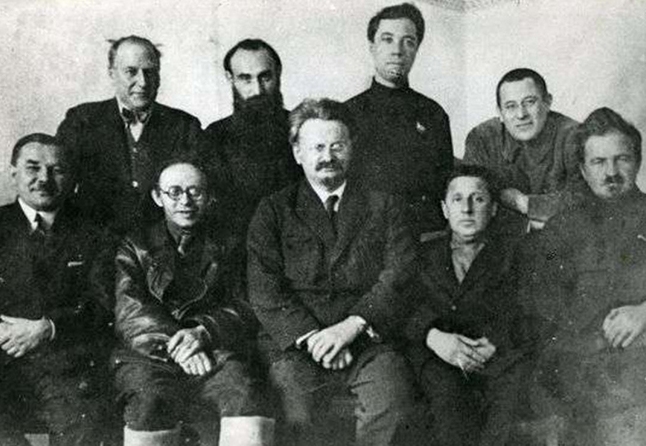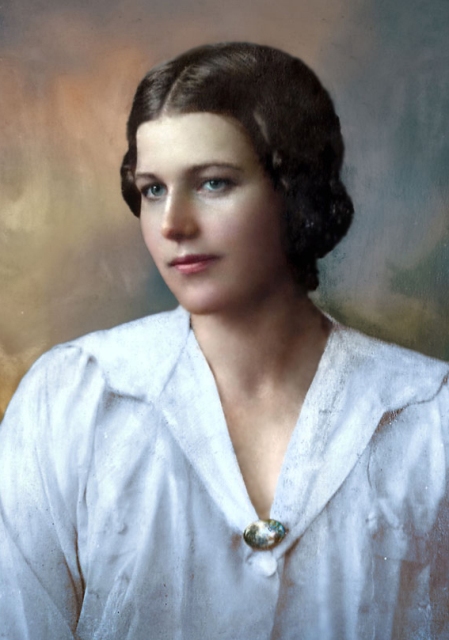Автор скетчей Хустов
Русский > Персонажи > Московские персонажи > Автор скетчей Хустов
Мы продолжаем напряженно работать, чтобы улучшить наш сайт и перевести его на другие языки. Русская версия этой страницы еще не совсем готова. Поэтому мы представляем здесь пока английскую версию. Мы благодарим вас за понимание.
Context
The sketch-writer Khustov does not play an active role in the story of The Master and Margarita, but he is mentioned nine times.
In chapter 7, when Styopa Likhodeev awakes in his apartment no. 50 in Bolshaya Sadovaya no. 302-bis while Woland is waiting for him, he remembers in his daze that the previous evening «something had taken place in Skhodnya, at the dacha of the sketch-writer Khustov» and that there was a lady «he had wanted to kiss». Styopa is surprised that Woland knows Khustov, and that he even manages to characterize him with «such a true, precise and succinct definition».
Later, in chapter 21, when Margarita interrupts her flight on the broom at the writers' house Dramlit in order to wreak havoc in apartment no. 84 of the critic Latunski, we learn that at the Khustovs, in apartment no. 80, «the water was pouring from the ceiling in both the kitchen and the toilet».
Prototype
There are several indications to assume that Bulgakov, when describing Khustov, must have thought of Karl Bernhardovich Radek (1885-1939), whose real name was Karol Sobelsohn. Radek was born in Lemberg in what was then Austria-Hungary, and which is now the city of Lviv in Ukraine. Already at a young age Radek joined socialist parties, first in Poland and then in Germany. In 1914 he met Vladimir Ilyich Lenin (1870-1924) in Switzerland, and after the October Revolution in 1917 he became a member of the Central Committee of the Communist Party of the Soviet Union. He played a major role in the organisation of the international communist movement, and even became secretary of the Comintern or the Third International in 1920. He also was an employee of the newspapers Pravda and Izvestia.
After Lenin's death, Radek lost his place in the Central Committee and was thrown out of the party in 1927 because of his support for Leon Trotsky (1879 -1940), but in 1930 he got his membership back. However, he was arrested during Stalin's Great Purges, and at the Second Moscow Show Trial in January 1937 he was sentenced to ten years of forced labour. Radek died in 1939 in a labour camp, according to the initial lecture after a fight with a fellow prisoner, but later it appeared that he was murdered by the NKVD on direct order of Lavrenti Pavlovich Beria (1899-1953).
It is no coincidence that Lichodeev is afraid that Khustov would find out that he had «followed the vodka with port wine» and that Woland would like to keep this fact confidential, but that he «can't vouch for Khustov», because «it only takes a fleeting glance at his face to understand that he is a bastard, a squabbler, a trimmer and a toady». This refers to the fact that Karl Radek had got a rather mild punishment at the Second Moscow Show Trial because he had made incriminating statements about Nikolay Ivanovich Bukharin (1888-1938) and some other officials. Bukharin was a Soviet-Russian economist who was the editor in chief of the Pravda from 1917 to 1929, and later, from 1934 to 1938, the editor in chief of Izvestia. As a result of the statements of Karl Radek, Bukharin was sentenced to death at the Third Moscow Show Trial in March 1938 and executed.
Later, Anna Mikhailovna Larina (1914-1994), the wife of Nikolay Bukharin, wrote the book Незабываемое [Nezabyvajemoje] or Unforgettable, which in 1991 was published in English as This I Cannot Forget: The Memoirs of Nikolai Bukharin's Widow. In this work we find an explanation of Bulgakov's reference to the dacha of the character Khstov in Skhodnya: «We lived near the station Skhodnya, where some houses were owned by the editors of Izvestia. Not far from us was Karl Radek's dacha».
The way in which Woland describes Khustov as a bastard, a squabbler, a trimmer and a toady, incidentally corresponds well with what the socialist feminist Angelika Isaakovna Balabanova (1875-1965) wrote about Karl Radek in My life is a struggle. Memoirs of a Russian socialist 1897-1938. In this work we read: «He was an extraordinary mixture of immorality, cynicism and spontaneous evaluation of ideas, books, music, people. Just as there are people who do not distinguish colours, Radek had no moral values. In politics he changed his position very quickly and adopted easily the most controversial slogans».
Karl Radek was often seen as the party clown. Leon Trotsky once wrote about him: «Comrade Radek only speaks seriously in exceptional circumstances», and at the party congress in 1918, Vladimir Lenin said about him: «I want to note that Comrade Radek accidentally managed to pronounce a serious sentence». One of Radek's infamous statements was about a possible two-party system in the Soviet Union. On this subject he said: «Of course we can have two parties: one in power, the other one in prison».
The Spaso House, the residence of US Ambassador William Bullitt, hosted the memorable Spring Festival on April 23, 1935, an event that inspired Bulgakov to describe Satan's Ball. Radek was responsible for one of the many incidents there. Behind the schene, he discovered a baby bear lying on his back with a bottle of milk in his arms. He took the bottle away, placed the nipple over a bottle of champagne and put it back in the bear's arms. Another guest, General Aleksandr Yegorov (1883-1939), the Chief of the General Staff of the Soviet Army, noticed how sad the bear was, took him in his arms and put him over his shoulder as if he was burping a baby. He must have done it a little too well, because the baby bear burped everything back on Yegorov's brand new tunic.
Finally, we find another hint to Karl Radek in the description of the lady whom Styopa Lichodejev «had wanted to kiss» in the dacha of Khustov in Skhodnya. This lady is not clearly described in the final version of The Master and Margarita. It is only said that «she was in radio, maybe not». In The Prince of Darkness, one of the earlier versions of The Master and Margarita, however, we read that Khustov had kissed a lady who was «not the wife of Khustov», and that she «stayed in a neighboring dacha». That could be a reference to Larissa Mikhailovna Reisner (1895-1926). Karl Radek was married and had a daughter, but it was common knowledge that Larissa Reisner, a writer and a correspondent of Izvestia, was his mistress.
The relationship between Radek and Reisner was remarkable at times. Radek was rather small and Reisner was quite large. In 1923, they went to Germany together to «trigger the German Revolution». On this trip, she pretended to be a Polish countess, and he pretended to be her secretary.
Поместить эту страницу |
Московские персонажи
- Аннушка
- Арчибальд Арчибальдович
- Жорж Бенгальский
- Михаил Александрович Берлиоз
- Иван Николаевич Бездомный
- Никанор Иванович Босой
- Автор скетчей Хустов
- Латунский, Ариман и Лаврович
- Степан Богданович Лиходеев
- Савва Потапович Куролесов
- Профессор Кузьмин
- Барон Майгель
- Алоизий Могарыч
- Максимилиан Андреевич Поплавский
- Александр Рюхин
- Аркадий Аполлонович Семплеяров
- Андрей Фокич Соков
- Доктор Стравинский
- Тузбубен
- Писателей в Грибоедове
- Другие персонажи в Москве



